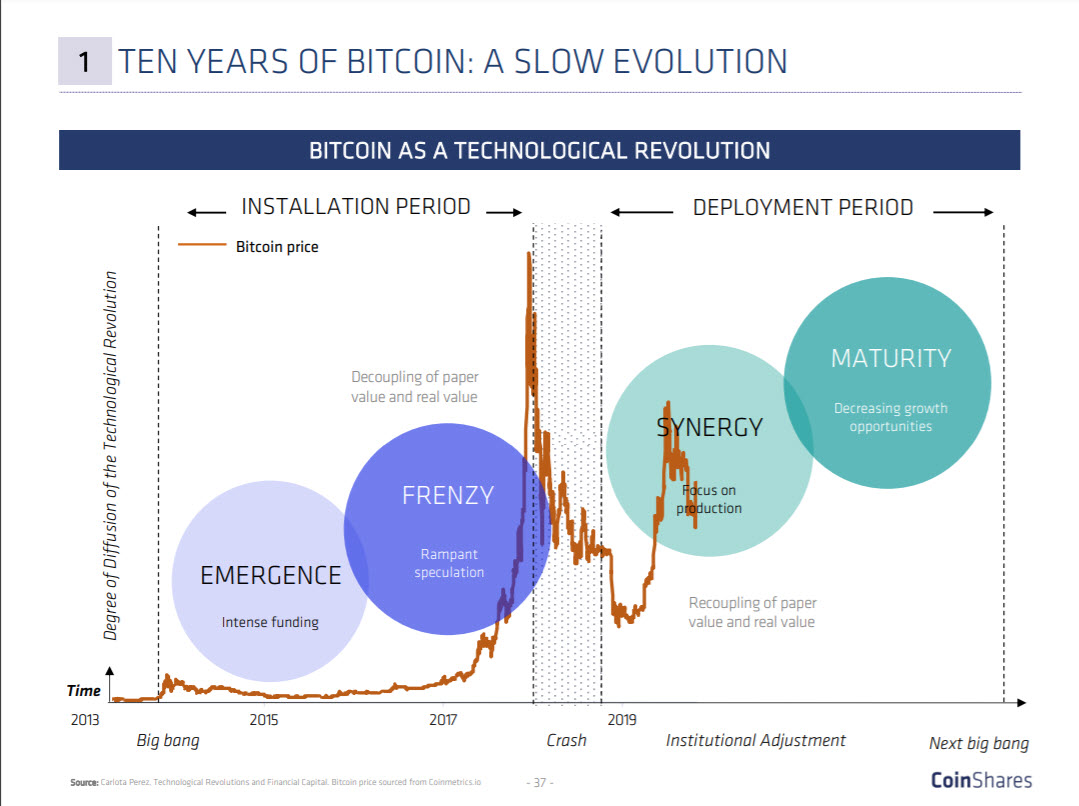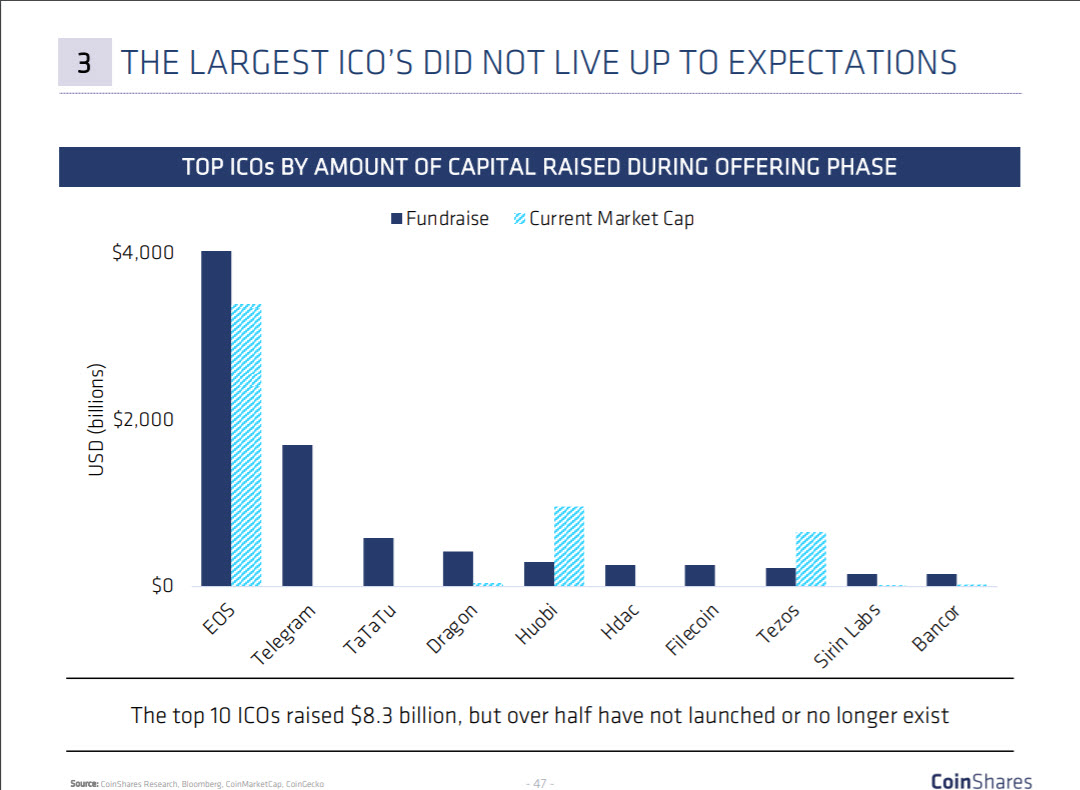Coinshares Reveals Top 10 Crypto Trends in 2019

If you want to check out the full 134-page report in-depth, be sure to download it here. If you want the Tl;dr version, here, we go over the highlights.
As CoinShares states at the start of the report, “knowledge is best when shared.” In order for the crypto industry to grow, “participants and outside analysts have to be able to identify, gather, and analyze data to tell the story of why this industry matters.” So, here’s what’s going on right now.
The report starts out by taking a look at the background of how we got to where we are today. It seems that a whole host of macro trends are combining to create the perfect storm for Bitcoin.
In 2019, there is a growing disparity between rich and poor. Warren Buffet, Bill Gates, and Jeff Bezos own more than the bottom half of Americans.

At the same time, there is increased automation in the workplace, rising political tensions and unrest in countries like Iran, Venezuela, and Hong Kong, and increasing social backlash against capitalism and big tech companies.
This is accompanied by diminishing trust in banks and governments. More than 90% of people consider their government to be corrupt to some extent.
While these external pressures may not seem like crypto trends, they are coming together to “set the stage” for Bitcoin.
In other words? Among the general public, blockchain is getting boring. We’ve seen a transition from emergence and frenzy to synergy and maturity.

Searches for “bitcoin” and “blockchain” are down. Research firm Gartner concluded that most blockchain applications are at least five to 10 years away from having any meaningful impact. This places us in the “trough of disillusionment.”
Conference numbers are fewer across the board, there is less overall investment, but the building continues as we begin to mature as an industry.
Over the last few years of Bitcoin, this is one of the clearest crypto trends we’re seeing–the shift from consumer to institutional.

This has been marked by a move from self-custody solutions, exchanges and wallets, to lending markets and infrastructure being built out for institutional investors. These include solutions like BlockFi and Bakkt.
Moreover, financial institutions are entering the space in the shape of TD Ameritrade, Fidelity, Bloomberg, and Square.
The report points out that the championing of decentralization may have been little more than an illusion. It even states that “nothing is decentralized,” including Bitcoin:
As bitcoin companies become more focused on institutional adoption, more bitcoins will be custodied by regulated entities who are subject to oversight.
It also warns to “expect surveillance money, and soon,” as more corporations enter the space with their own “cryptocurrencies” to track and trace our financial movements.

The top 10 ICOs raised more than $8 billion between them. However, they all fell flat on delivery. Over half of them haven’t launched yet or have dropped out of the market completely.

When it comes to analyzing crypto trends, this highlights that no investment is guaranteed. While ICOs and STOs seem to be pretty much dead, the report points out that the IPO space didn’t do much better either.
One of the clearest crypto trends is the explosion of stablecoins in the industry. They have become popular as they allow for rapid settlement of trades on the same settlement medium as the asset is being traded. This effectively enables the blockchain to act as a settlement network.
Interestingly, though, while the stablecoin market doubled in value, USDT (Tether) still retains a massive 80% of proportional market share.
Rather amusingly, the report points to a rise in the number of “initial country offerings.” From Venezuela’s Petro and the Marshall Islands SOV to Turkey and China’s proposed state-backed cryptocurrencies, the “race” seems to be on.

But as the report points out, between Satoshi or “these guys”, who do you prefer?
From the ‘Zuck Buck’ to Apple and Uber, big tech companies are moving into finance. This will make them tantamount to central banks. Social networks are already becoming the new payment networks.
The report concludes that the new era of digital payments won’t be led by banks as they don’t have the same global reach or infrastructure as big tech.
Crypto derivatives are on fire with over $3 billion being traded every day across the top 13 exchanges. Whether this is good for the space or not remains up for debate. After all, the launch of regulated bitcoin futures has sent its price plummeting twice now.

However, if you look at the growth of gold since cash-settled (paper) futures were introduced (the futures market is now 30x the physical gold market), it could be a promising sign.
The report notes, however, that the crypto derivatives market needs to be “more robust” and will require the “development of better industry risk management practices.”
If you analyze the key data such as hash rate and the number of accounts, adoption is on the rise. While search volume, blockchain funding, and market cap are all down from their previous highs, the industry is still growing.
There is now more computational power on the network than ever before and on-chain transactions have increased by over 150% to $2 billion per day.
Many things coming up as we head into next year are definitely TBD. But, if the trend towards centralization and surveillance money leaves you feeling deflated, as Meltem pointed out:
the tools of the revolution are also proliferating
What do you think about Coinshares’ latest crypto trend report? Add your thoughts in the comment section below!
Images via medium.com, Coinshares
The post Coinshares Reveals Top 10 Crypto Trends in 2019 appeared first on Bitcoinist.com.
source: https://bitcoinist.com/top-10-crypto-trends-2019/
TheBitcoinNews.com is here for you 24/7 to keep you informed on everything crypto. Like what we do? Tip us some BATSend Tip now!














Article comments